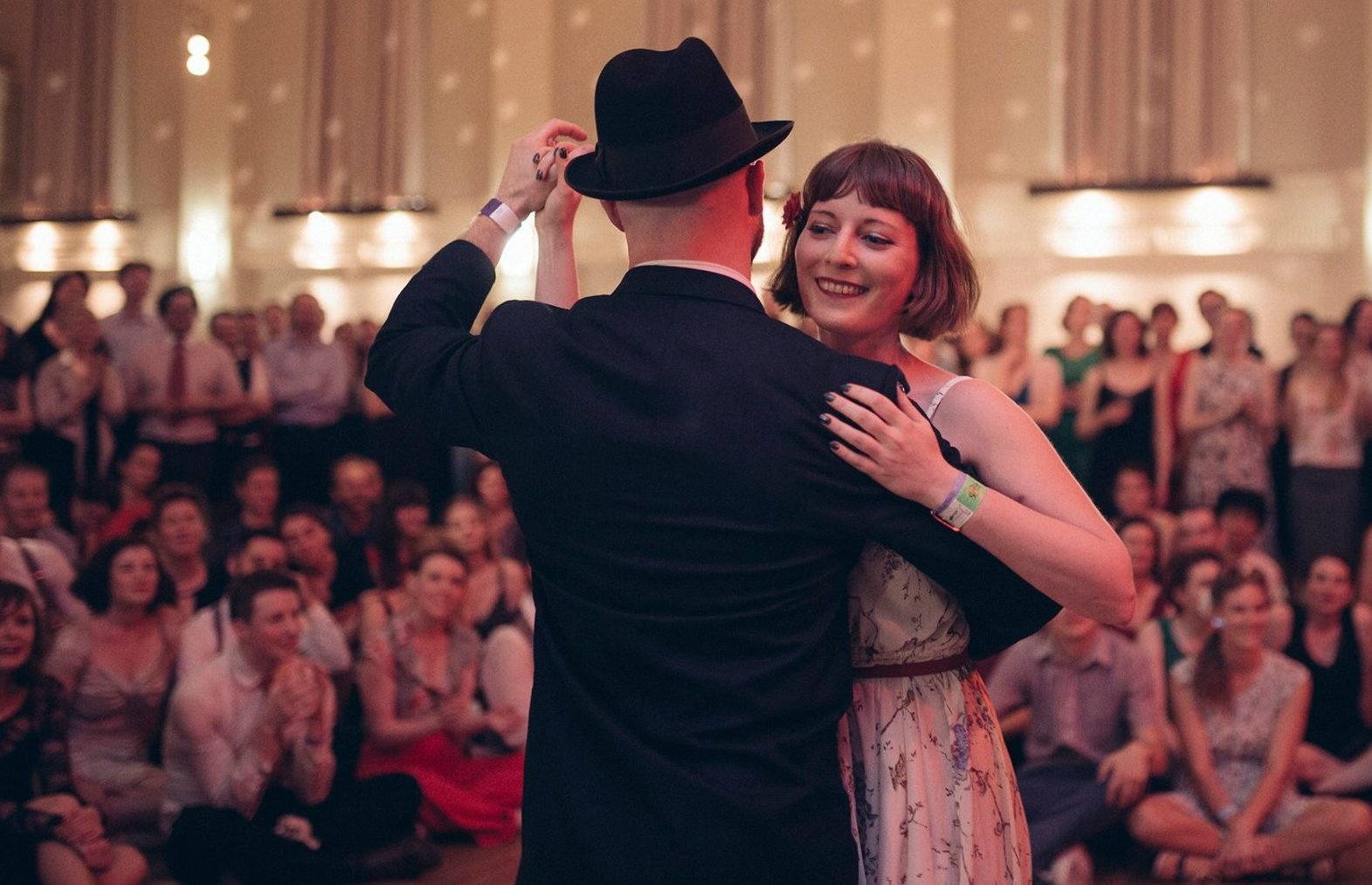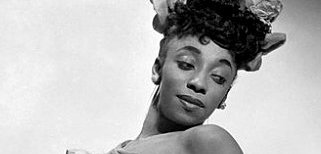WHAT IS SWING DANCING?
Swing dancing was created by African Americans in the early 20th century. Swing dancing is often referred to as an ‘umbrella’ term and it encompasses a varied range of styles danced to Swing music and they’re often mixed on the dance floor. Swing music had its heyday from 1935 to 1946 when Big Band swing music was at its peak in the United States but has been around since the late 1920s. Today, it is experiencing a huge revival with modern musicians bringing new interpretations to the genre.
Swing dancing is generally a partnered (though not always), social dance which means we learn and dance with lots of different people. It’s a great way to make new friends while learning a new skill and getting fit!
Dance Styles
Here’s an overview of the different Swing Dance styles you might come across in class. Whilst we mostly teach Lindy Hop, we also have regular Blues and Solo Jazz classes and many of our classes offer tasters in the other styles.
LINDY HOP
The mother of Swing dances is Lindy Hop and this is the core dance taught by Swing Patrol. We love to lindy and you can see how joyous it is by the smiles on people’s faces. It originated in Afro-American area of Harlem in the late 1930s and early 1940s. You can read about some of the original Lindy Hoppers in our Swing Stars section.

BLUES
Like swing dance, Blues dance evolved from African rhythms and movements. However blues dancing was never widely practised as a social or performance dance; it developed in smoky juke joints, blues house parties and rent parties, giving it a more intimate feel.
Blues dance is all about interpreting and expressing the music. Many aspects of Blues dancing, such as call and response, emotional intensity, and tension and release, are directly related to the music. If you love blues music you’ll love blues dancing!
Blues dancing is very new to Europe, but is a growing scene and going through a particularly exciting time in London at the moment. Join us on the blues journey, and become addicted to this beautiful dance.

SOLO JAZZ
Solo Jazz is a general term which covers a number of different moves which are danced without partner. It can be improvised or as part of a routine, such as the Shim Sham, Tranky Doo or Big Apple. Solo Jazz is a great way to focus on your own dancing whilst also giving you a repertoire to play with when dancing with partners.

CHARLESTON
One of the most famous dances of the Swing era is the Charleston. It can be danced solo or with a partner. This popular dance from the 1920s will forever be associated with the beaded dresses and headdresses fashionable at the time.
In the 1930s and 1940s a variant of Charleston became popular as it was adapted to suit the music of the time and is known as Lindy Charleston or 30s/40s Charleston.

BALBOA
Balboa originated in the Southern California and evolved as a response to the overcrowded dancefloors of the time. It has a closer embrace than Lindy Hop or partnered Charleston and is often danced to faster music as the tighter embrace allows for quicker movements.

SHAG

HISTORY
Google “Swing” and you’ll get lots of different results. Most know it as a musical genre, which had its heyday from 1935 to 1946, when big band swing music was the most popular in the United States. But this jazzy, joyous music has been around since the late 1920s and, with musicians today giving it a modern twist, it’s truly back with a vengeance. Swing dancing encompasses a varied range of styles danced to that same music — they’re even often mixed on the dance floor. The mother of Swing dances is the Lindy Hop, nicknamed the Jitterbug for it bouncy, infectious energy. This is the core dance taught by Swing Patrol, but we also pay heed to other vintage dances from the Swing family such as Balboa, Charleston, Blues and Solo Jazz. At Swing Patrol we are passionate about the amazing history and evolution of this dance. We do our best to instil a sense of awareness about this in our students. Check out our blog to read about the time we bought Norma Miller to London!
SWING STARS
These are the legends in the Swing world, the people who introduced the world to Swing Dancing and without whom, we wouldn’t be dancing today!

Frankie
Swing dancer extraordinaire Frankie Manning was a leading dancer at Harlem’s legendary Savoy Ballroom where in the mid-1930s, he revolutionised the course of the lindy hop with his innovations, including the air step.
Read more or check out all our Frankie posts

Norma Miller
Norma Miller – also known as the “Queen of Swing” – was the last surviving member of legendary performance troupe Whitey’s Lindy Hoppers and one of the greats of Lindy hop. Author, choreographer, comedian and actor, Norma worked in show business for over seven decades and continues to be an inspiration to Lindy hoppers around the globe.
Read more or check out all Norma Miller Posts

Jean Veloz
Jean Veloz (born Jeannette Phelps) is an icon of the Hollywood style of Lindy Hop. After learning to dance with her brothers in the family living room, Jean’s career took off when she won a Screen Actor’s Guild membership card and a dance cameo in the film Swing Fever (1943) in a Hollywood dance contest.
Read more about Jean